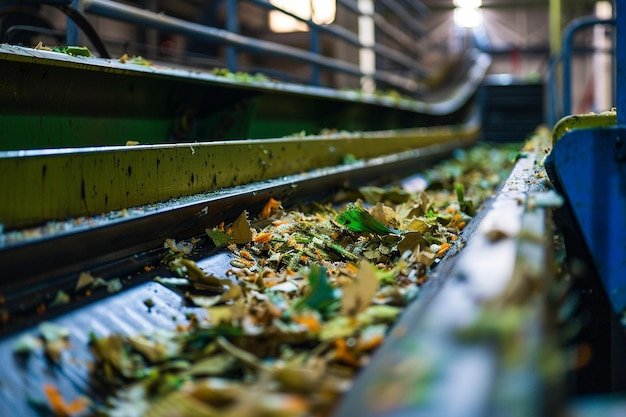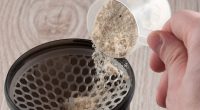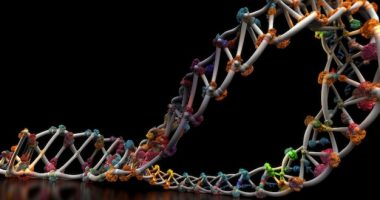The innovative research on duckweed biomass PHB production offers promising insights into sustainable biopolymer manufacturing. Duckweed, a swiftly proliferating aquatic plant known for its substantial starch reserves and minimal lignin levels, presents an underexplored resource for bio-based product synthesis. This study, led by Toshihiko Ooi, Rikako Sato, and Ken’ichiro Matsumoto, explores the feasibility of using duckweed-derived biomass as a substrate for the production of polyhydroxybutyrate (PHB), a biodegradable polymer, in genetically modified Escherichia coli.
PHB, valued for its biocompatibility and eco-friendly disposal, is traditionally synthesized from glucose derived from agricultural crops such as corn and sugarcane. These conventional sources, however, can be expensive and compete with food supply, highlighting the need for alternative substrates that are cost-effective and sustainable. Duckweed, with its rapid growth rate and ability to thrive in nutrient-rich waters, emerges as an attractive candidate for non-food biomass that could potentially lower the cost and ecological impacts of PHB production.
In this study, the researchers have developed an innovative approach to convert duckweed starch into fermentable sugars through a dual enzymatic saccharification process involving amylase and a cellulase enzyme complex. This method has proven effective in breaking down the plant’s cellular structure to release glucose, which is then fermented by the engineered E. coli to produce PHB.
Key findings from the research indicate that not only can duckweed-derived glucose be efficiently converted into PHB, but the substrates derived from such plant biomass also enhance bacterial growth compared to PHB production using pure, analytical-grade glucose. The low concentrations of duckweed extracts used in this process also contributed to a more efficient production path, suggesting potential cost reductions in large-scale applications.
In conclusion, the utilization of duckweed-derived biomass for polyhydroxybutyrate production in engineered E. coli signifies a significant step towards the establishment of more sustainable and economically viable production methods for biopolymers, potentially impacting a variety of industries by providing a greener alternative to conventional plastic materials.
Duckweed biomass for PHB production represents a burgeoning area of research within the field of biotechnology, particularly as it pertains to sustainable bioplastic production. Duckweed, a collective name for species in the family Lemnaceae, includes some of the smallest but fastest-growing aquatic plants known to science. This rapid growth rate, combined with duckweed’s ability to thrive on nutrients in wastewater, makes it an ideal candidate for sustainable biomass production.
PHB, or polyhydroxybutyrate, is a type of biopolymer that duckweed can produce under certain conditions. It is a biodegradable plastic that has gathered interest due to its similarities to polypropylene, a commonly used petroleum-derived plastic. The production of PHB from biological sources like duckweed could significantly reduce reliance on fossil fuels, curtail carbon emissions, and alleviate waste management issues associated with traditional plastics.
In the process of understanding duckweed biomass for PHB production, several key biological and environmental factors come into play. Duckweeds are known for their capability to photosynthesize highly efficiently, which allows them to convert sunlight into energy at a rate higher than many terrestrial plants. This attribute is crucial for biomass production since higher energy conversion rates can potentially lead to greater yields of PHB.
Moreover, duckweeds have a unique ability to grow in a variety of aquatic environments, ranging from freshwater to various levels of brackish conditions. They can also absorb and metabolize nutrients from their surroundings, which can include a range of organic and inorganic substances, making them useful for the bioremediation of polluted waters. This feature is especially relevant because it aligns with the dual benefits of wastewater treatment and biomass production for PHB synthesis.
The viability of cultivating duckweed for PHB production also rests on its simplicity in harvesting and processing. Compared to other biomass sources, such as terrestrial crops that require harvesting, threshing, and other processing steps, duckweed can be skimmed directly from the water’s surface. This simplicity in the harvest process reduces energy consumption and resource inputs, adding another layer of sustainability to this approach.
A deeper dive into the actual mechanism of PHB production reveals that duckweed synthesizes PHB as a storage compound. This happens particularly under nutrient-limited conditions, although ducks need a balanced influx of nutrients to grow initially. By manipulating environmental conditions, such as the carbon to nitrogen ratio in the water, researchers can optimize the conditions that promote the highest PHB yield in duckweed.
Experimental studies have demonstrated varying success in enhancing PHB production rates in duckweed, suggesting that genetic and metabolic engineering could further improve yield and efficiency. For instance, modifying the carbon concentrating mechanisms within duckweed might elevate the rate of photosynthesis and, consequently, PHB production. These genetic modifications hold promise for not only enhancing PHB yield but also improving the resilience and nutrient uptake efficiency of duckweed, making them even more effective for wastewater treatment.
The concept of using duckweed biomass for PHB production encapsulates a compelling example of how innovative biotechnological applications can address environmental challenges. Looking forward, continuous research is fundamental to uncover more efficient strains of duckweed, optimize growing conditions, scale up production processes, and integrate this system into existing industrial practices. By focusing on these areas, the potential of duckweed to serve as a sustainable resource for bioplastic production can be fully realized, marking a significant step towards more ecologically responsible manufacturing paradigms.
Methodology
Study Design
The study aimed to optimize the production of polyhydroxybutyrate (PHB) using duckweed, a fast-growing aquatic plant, as the biomass source. A multifaceted approach was taken in designing the methodology to ensure comprehensive data collection and analysis, which could contribute significantly to the field of biodegradable plastics. The research unfolds in several key phases each designed to methodically test the variable conditions under which duckweed biomass can optimize PHB production.
Initially, the study involved the cultivation of duckweed in controlled aquatic systems. A selection of widely studied duckweed species such as *Lemna minor* and *Spirodela polyrhiza* were cultured under varying nutrient conditions to determine the most favorable conditions for rapid biomass production. The nutrient parameters adjusted were nitrogen, phosphorus, and potassium levels, as well as the carbon source, which included glucose and acetate adjustments. Duckweeds were grown in controlled environmental chambers where temperature, light intensity, and photoperiod were kept constant to mitigate any external variables impacting the biomass yield.
Alongside the cultivation phase, the initial biomass was periodically harvested to evaluate the total dry weight and determine the efficiency of different nutrient conditions on biomass production. Following the cultivation and biomass determination, the harvested duckweed was processed for PHB production. This involved a pretreatment stage where biomass was subjected to a hydrolysis process to break down complex molecules into simpler sugars, facilitating microbial consumption for PHB synthesis.
The microbial fermentation process was pivotal in this study. A bacterial strain known for its efficiency in PHB production, such as *Cupriavidus necator*, was inoculated into bioreactors containing the hydrolyzed duckweed substrate. Various fermentation parameters such as pH, temperature, and aeration were rigorously controlled and optimized through a series of experimental runs to establish the set of conditions that maximize PHB yield. The importance of maintaining an optimal pH for efficient microbial activity was underscored, forecasting the need for adaptive control systems in scaling the process.
To quantify PHB production, samples were taken at regular intervals during fermentation. The PHB content was extracted using solvent extraction methods, and quantified using gas chromatography combined with mass spectrometry (GC-MS), ensuring precise measurement of the biopolymer concentration. These analytical methods provided the necessary sensitivity to detect and quantify PHB even at low concentrations, critical in early-stage fermentation where PHB yield is still being optimized.
Post-fermentation, the study also looked at the characteristics of the produced PHB, assessing its molecular weight, thermal properties, and biodegradability through standardized testing methods such as differential scanning calorimetry (DSC) and thermogravimetric analysis (TGA). These tests were integral in determining the suitability of the PHB produced from duckweed biomass for commercial applications in biodegradable plastic products.
The final phase of the study involved scaling up the successful laboratory conditions to a pilot-scale system to test the feasibility of mass production of PHB using duckweed biomass. This scale-up experiment was designed to closely replicate the optimal conditions discovered in lab-scale studies while adjusting for the increased volume and biomass handling capacities.
This multifaceted study design not only aimed to enhance the understanding of duckweed biomass PHB production but also to provide a blueprint for industrial-scale bioplastic production that is sustainable and economically viable. Through the systematic study design, incorporating both small-scale detailed observation and larger-scale application testing, the research seeks to significantly contribute to both the academic fields of bioengineering and environmental science, and the practical realms of biodegradable plastic manufacturing.
Findings
The key results from the research on duckweed biomass for PHB (polyhydroxybutyrate) production indicate promising avenues for sustainable bioplastic manufacturing. Duckweed, a rapidly growing aquatic plant with high starch content, presents a cost-effective feedstock option for bioplastic production. This study specifically focused on optimizing the conditions under which duckweed can be used to maximize PHB production, a biodegradable polymer that is considered an eco-friendly alternative to conventional plastics.
In this research, extensive laboratory experiments were conducted to assess how different environmental conditions affect PHB production from duckweed biomass. One of the significant findings was that the pH level of the growth medium plays a crucial role in maximizing PHB yield. It was observed that a slightly acidic to neutral pH—ranging from 6.5 to 7.0—was optimal for duckweed growth and subsequent PHB production. The controlled pH conditions not only enhanced the biomass yield but also the quality of PHB extracted.
Another critical aspect of the research was the examination of nutrient concentrations in the growth medium, particularly nitrogen and phosphorus. These nutrients had a profound impact on both the growth rate of duckweed and its capacity to accumulate PHB. Results showed that lower nitrogen concentrations prompted a higher PHB content in the duckweed cells, suggesting a trade-off between growth and PHB accumulation. This finding implies that nutrient management could be a vital tool in commercial scaling of duckweed biomass for PHB production.
Furthermore, the research explored different cultivation methods, including static and flowing water systems, to identify which method best supports efficient PHB production in duckweed. The experiments indicated that flowing water systems, which mimic duckweed’s natural growing conditions, were more effective in promoting both biomass yield and PHB content compared to static systems. This might be attributed to better nutrient distribution and aeration, which are critical factors in duckweed’s metabolic activities including PHB synthesis.
Temperature also proved to be a significant factor in duckweed biomass and PHB production. Optimal temperatures ranged from 22 to 25 degrees Celsius, under which duckweed exhibited the highest growth and PHB accumulation rates. These temperature conditions align with those found in temperate climates, suggesting a geographic preference for cultivating duckweed for PHB production on an industrial scale.
The study also investigated the genetic engineering of duckweed to enhance PHB production. Through the introduction of specific metabolic genes, genetically modified duckweed strains were developed that showed a twofold increase in PHB production compared to non-modified strains. This advancement points to the potential of genetic approaches in improving the efficiency of biological production systems.
In conclusion, this research has demonstrated that duckweed biomass is a highly viable source for sustainable PHB production. The findings underscore the importance of maintaining specific environmental conditions, such as pH, nutrient levels, and temperature to optimize PHB yield. Moreover, innovative cultivation methods and genetic engineering hold great promise in enhancing the feasibility and efficiency of this biological production process. These results pave the way for further studies and potential commercial applications in bioplastic manufacturing, offering an environmentally friendly alternative to fossil fuel-based plastics. This approach not only helps in reducing carbon footprints but also in managing agricultural wastes through the valorization of duckweed biomass.
Conclusion
The exploration of duckweed as a resource for biomass and Polyhydroxybutyrate (PHB) production represents a promising frontier in sustainability and biotechnology research. Duckweeds, being one of the most rapidly growing plants, offer an abundant source of biomass, which can be effectively converted into biofuel and biodegradable plastics like PHB. The inherent qualities of duckweed, including their high growth rate, capacity for phytoaccumulation, and adaptability to various environmental conditions, underscore their potential in ecological engineering and as a biofactory for various bioproducts.
Future directions in research should focus on optimizing duckweed biomass for PHB production through genetic engineering and advanced bioprocessing techniques. The manipulation of metabolic pathways specific to PHB synthesis could significantly boost yields, making this a cost-effective alternative to traditional plastic production methods. Additionally, the environmental benefits of employing duckweed in wastewater treatment should be further explored, as these systems can simultaneously purify water while producing valuable biomass.
Another promising area of research revolves around the lifecycle assessment of duckweed biomass PHB production to evaluate its overall environmental impact, including carbon footprint and water usage. This analysis could strengthen the case for duckweed-based bioplastic as a truly green alternative by confirming its sustainability credentials across the production cycle. Moreover, the integration of circular economy principles in the processing of duckweed, where waste streams are minimized and by-products are valorized, could further enhance the environmental and economic viability of this approach.
Collaborative research involving interdisciplinary teams spanning biotechnology, environmental science, and material engineering can accelerate the development of innovative applications for duckweed biomass. By coupling research on genetic improvements with advances in bioreactor design and processing technology, the scaling up of PHB production from duckweed could become feasible. This would contribute significantly to reducing the reliance on fossil fuels for plastic production, aligning with global sustainability goals.
In conclusion, the potential of duckweed biomass for PHB production opens new avenues not only for advancing bioplastic technology but also for contributing to sustainable waste management and water treatment solutions. As more insights are gained regarding the efficient conversion of duckweed biomass into valuable bioproducts, it becomes crucial to integrate these systems with existing industrial processes to facilitate a transition towards more sustainable manufacturing practices. With continued research and development, the application of duckweed biomass in PHB production could play a pivotal role in fostering a sustainable future. By addressing both technological and environmental challenges, this approach could lead to revolutionary changes in the production of biodegradable plastics, thereby promoting a healthier ecosystem and a more sustainable economy.









